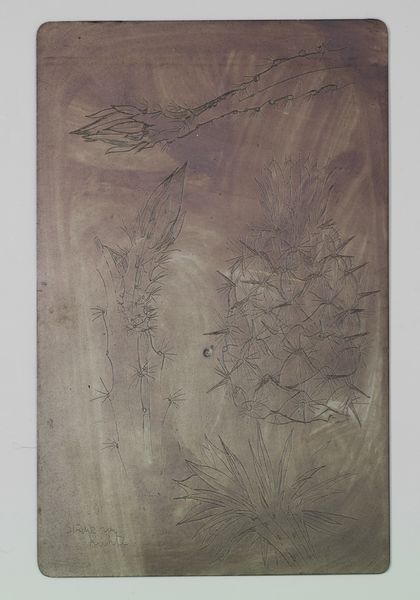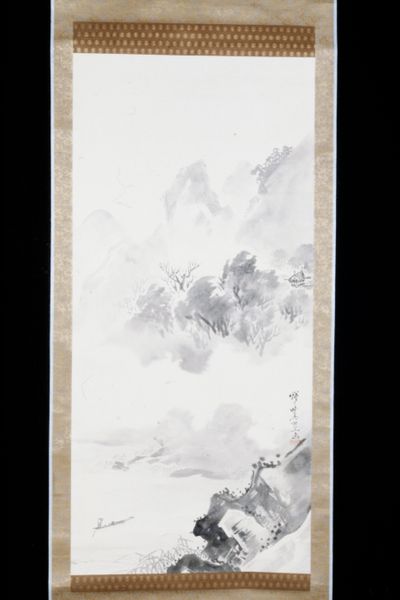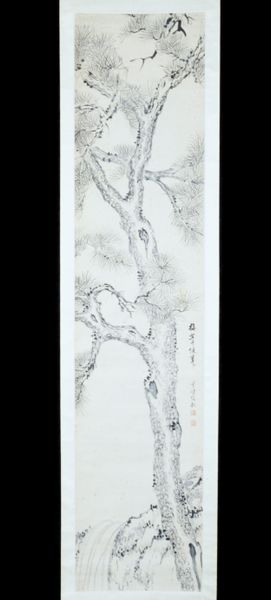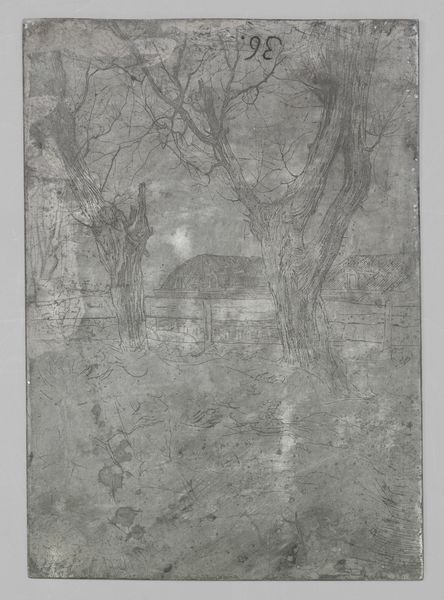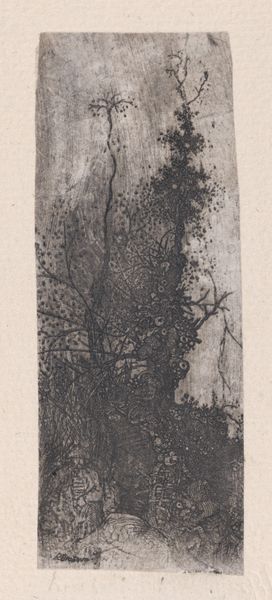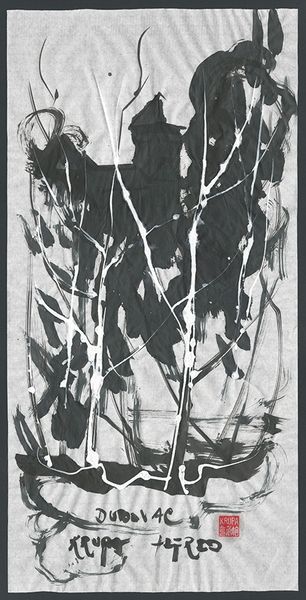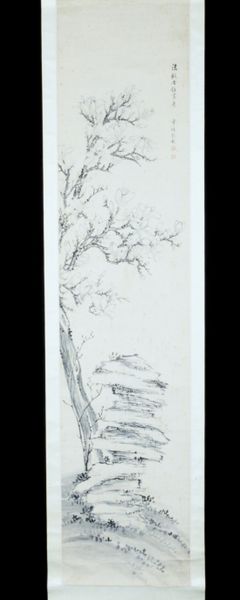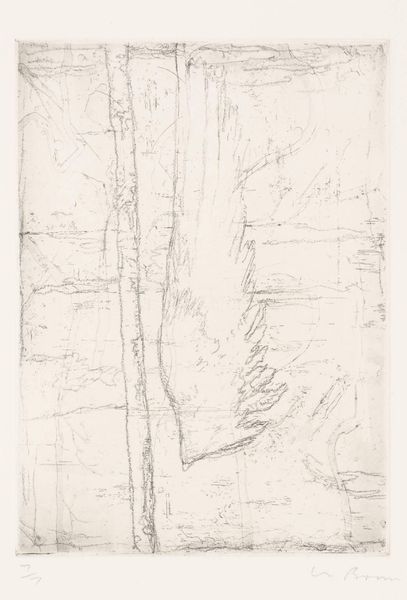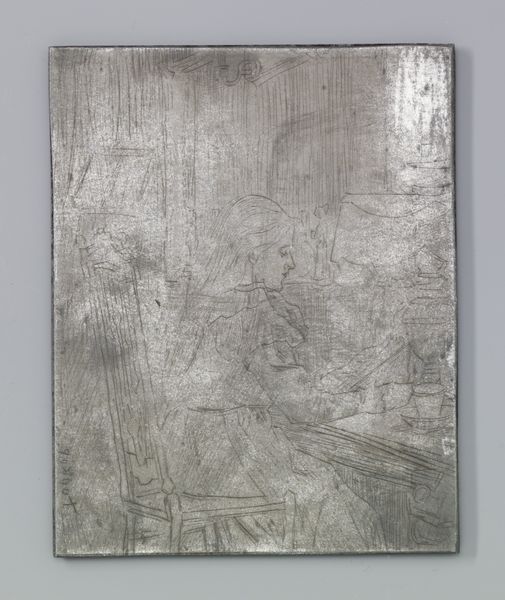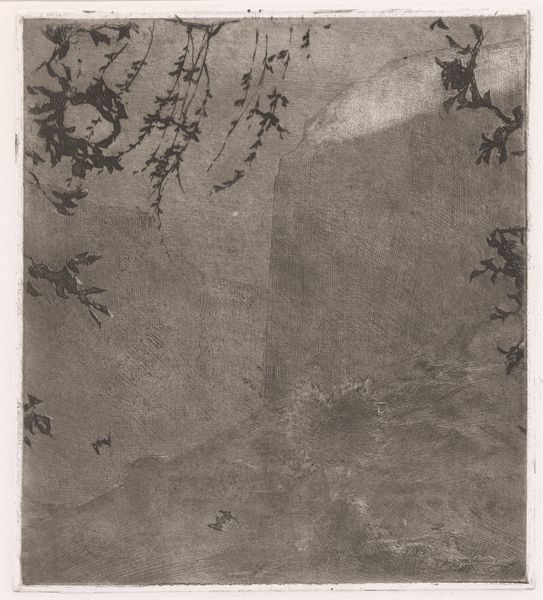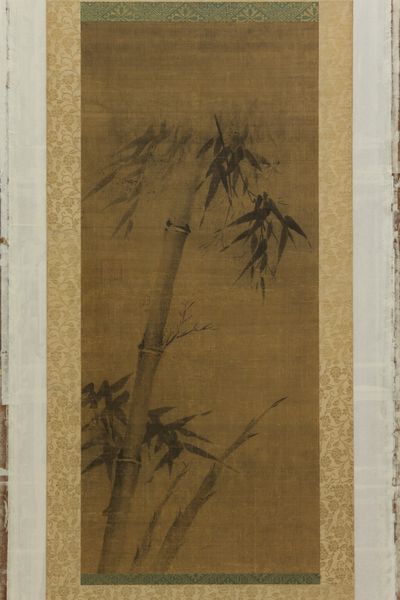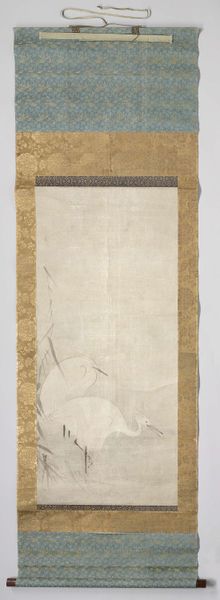
Dimensions: height 133.5 cm, width 30.6 cm, height 197 cm, width 43.5 cm, height 7.5 cm, width 52 cm, depth 8.5 cm
Copyright: Rijks Museum: Open Domain
Editor: Ok, next up we have "Birds after Snowfall in Midwinter," circa 1914, a drawing in ink on paper by Konoshima Okoku. There's a definite sparseness to the composition – it’s all soft grays and whites, with just a few delicate lines suggesting branches and birds. How do you interpret this work through a historical lens? Curator: This piece offers a window into the artistic climate of early 20th century Japan, a period marked by significant social and political transformation as Japan modernized and Westernized. Works like this, which engage with traditional themes – the beauty of nature, the appreciation of ephemeral moments – often served as a way to negotiate these rapid changes. Editor: Negotiate how so? Curator: Consider the historical context: this was around the time of the Taisho Democracy. Despite superficial engagement with democratic ideals, conservative political forces continued their influence. Looking at the image, we can consider whether the retreat to an idealized, natural past perhaps offers a visual counterpoint to anxieties about urbanization and industrialization of the nation. Do you notice any symbols that might suggest that? Editor: The birds? As messengers? Curator: Precisely. Birds can often be seen as symbols for freedom and even spirituality in artwork. But do you think the monochrome palette speaks to a social concern, also? Editor: Perhaps the somber tone evokes a sense of social quiet or reservation? This was an informative way to analyze the social elements reflected in the work. Curator: Yes, and art in the public sphere can communicate this, often in complex and multi-layered ways. Looking at it with that lens allows us to think about not just aesthetics, but intention.
Comments
rijksmuseum about 2 years ago
⋮
With this painting Okoku evokes the atmosphere of a winter landscape, in which the snow creates a diffuse light and muted colours. Tranquillity and a somewhat forlorn, lonely mood characterize Okoku’s landscapes. This has been linked with Okoku himself, who fell into isolation in the early 20th century when the art world began to consider his introverted work as old-fashioned.
Join the conversation
Join millions of artists and users on Artera today and experience the ultimate creative platform.

